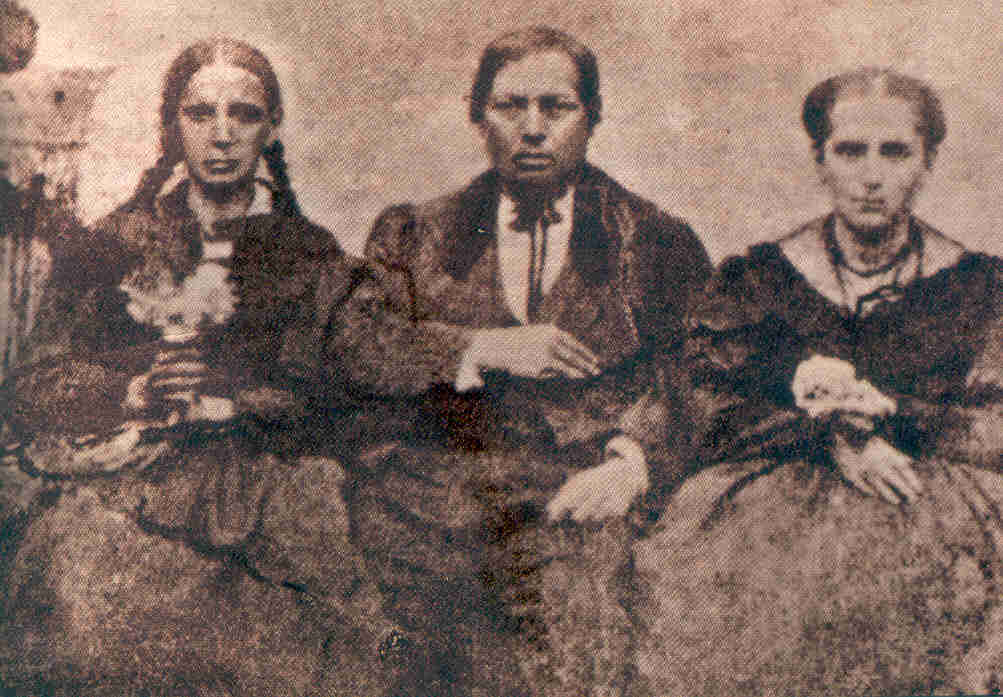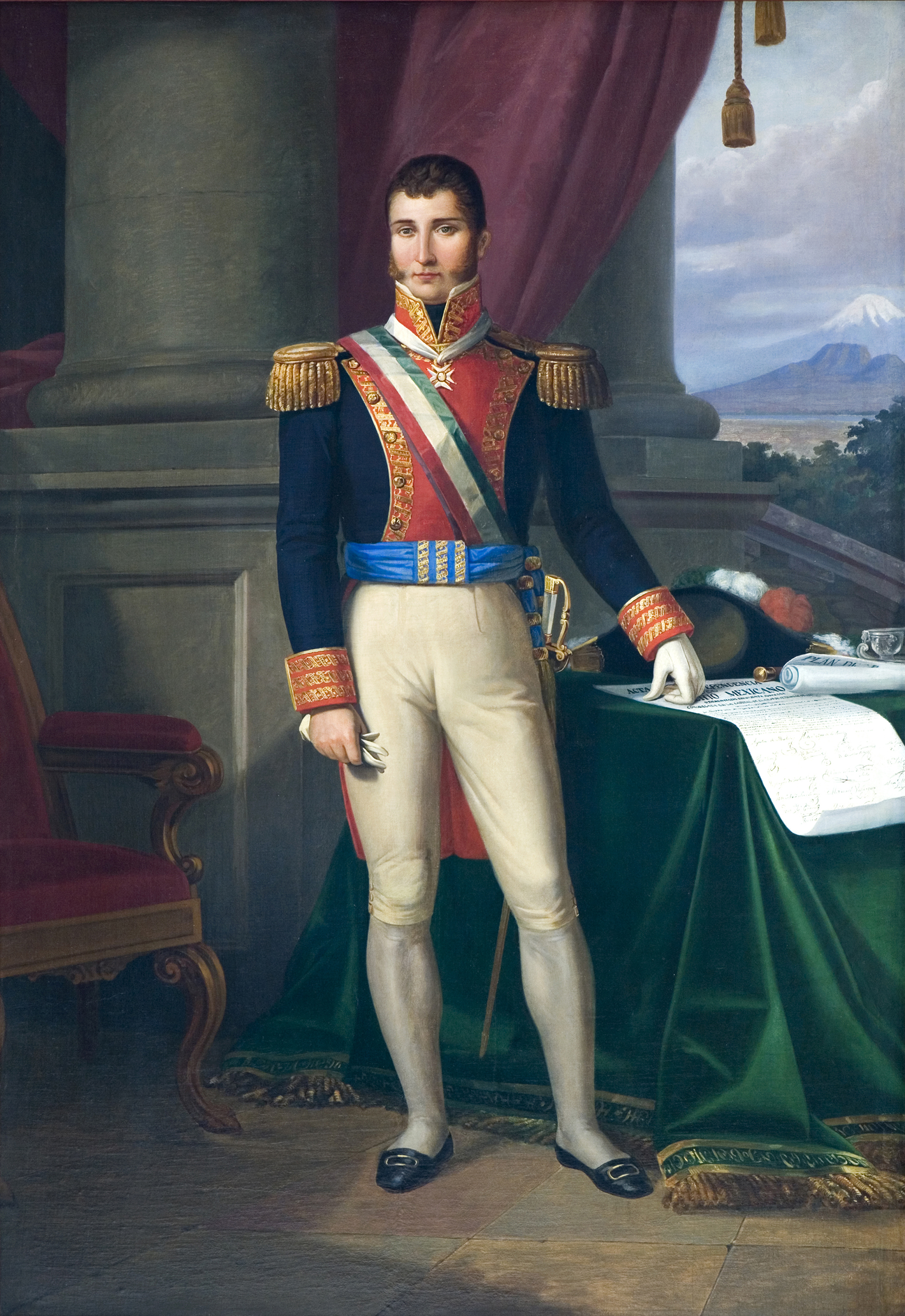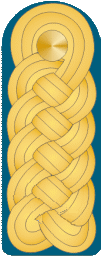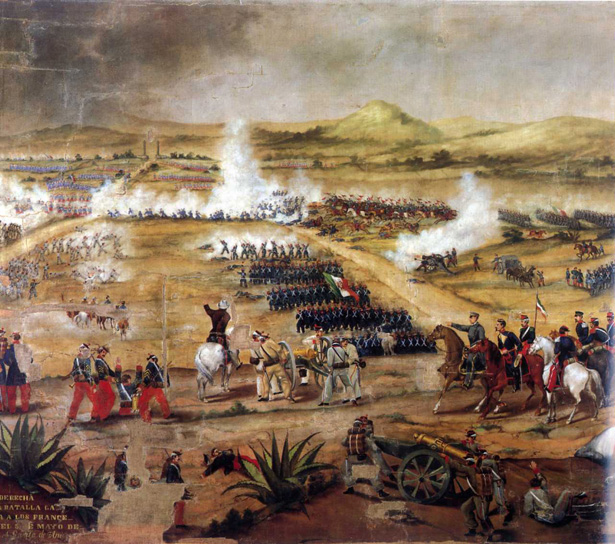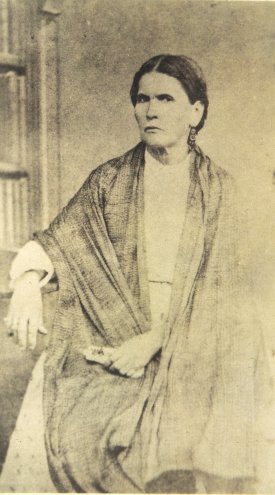|
Manuel De Quesada Y Loynaz
Manuel de Quesada y Loynaz (March 29, 1833 - January 29, 1884) was a Cuban revolutionary and the first General-in-Chief of the Cuban Liberation Army who fought against Spain in the Ten Years' War. Early life Manuel de Quesada y Loynaz was born in Puerto Príncipe (now Camagüey Province), Spanish Cuba on March 29, 1833.Harper's Weekly. (1869). United States: Harper's Magazine Company. He was part of a distinguished Cuban family, with parents Pedro Manuel de Quesada and Carmen Loynaz y Miranda. His sister Ana de Quesada y Loynaz would later marry Carlos Manuel de Céspedes. Mexican Army Reform War In the mid-1850s, he left Cuba and relocated to Mexico. Quesada joined the Army of Mexico as a second lieutenant in 1856.Johnson, W. F. (2018). The History of Cuba: Volume III. (n.p.): Outlook Verlag. During the Reform War from 1857 to 1861, he fought on the side of the Mexican liberals and Benito Juárez. Amid a three-year civil war and the eventual defeat of the Mexican co ... [...More Info...] [...Related Items...] OR: [Wikipedia] [Google] [Baidu] |
Camagüey Province
Camagüey () is the largest of the provinces of Cuba. Its capital is Camagüey. Other towns include Florida and Nuevitas. Geography Camagüey is mostly low lying, with no major hills or mountain ranges passing through the province. Numerous large cays (including what used to be one of Fidel Castro's favourite fishing spots; the Archipiélago Jardines de la Reina) characterize the southern coasts, while the northern coast is lined by Jardines del Rey of the Sabana-Camagüey Archipelago. Sandy beaches are found on both coasts also, and despite a large potential for tourism, the province has seen little development in that area with the exception of Santa Lucía beach, on the province's North coast. Economy The economy of the Camagüey province is primarily cattle and sugar (in the north and south) farming, and the province is known for its cowboy culture, with rodeos frequently held. Chicken The chicken (''Gallus gallus domesticus'') is a domestication, domes ... [...More Info...] [...Related Items...] OR: [Wikipedia] [Google] [Baidu] |
Benito Juárez
Benito Pablo Juárez García (; 21 March 1806 – 18 July 1872) was a Mexican liberal politician and lawyer who served as the 26th president of Mexico from 1858 until his death in office in 1872. As a Zapotec, he was the first indigenous president of Mexico and the first indigenous head of state in the postcolonial Americas. Born in Oaxaca to a poor rural family and orphaned as a child, Juárez was looked after by his uncle and eventually moved to Oaxaca City at the age of 12, working as a domestic servant. Aided by a lay Franciscan, he enrolled in a seminary and studied law at the Institute of Sciences and Arts, where he became active in liberal politics. After his appointment as a judge, he married Margarita Maza, a woman of European ancestry from a socially distinguished family in Oaxaca City, and rose to national prominence after the ouster of Antonio López de Santa Anna in the Plan of Ayutla. He participated in La Reforma, a series of liberal measures under the pre ... [...More Info...] [...Related Items...] OR: [Wikipedia] [Google] [Baidu] |
Tlaxcala
Tlaxcala (; , ; from nah, Tlaxcallān ), officially the Free and Sovereign State of Tlaxcala ( es, Estado Libre y Soberano de Tlaxcala), is one of the 32 states which comprise the Federal Entities of Mexico. It is divided into 60 municipalities and the capital city is Tlaxcala City. It is located in East-Central Mexico, in the altiplano region, with the eastern portion dominated by the Sierra Madre Oriental. It is bordered by the states of Puebla to the north, east and south, México to the west and Hidalgo to the northwest. It is the smallest state of the republic, accounting for only 0.2% of the country's territory. The state is named after its capital, Tlaxcala, which was also the name of the Pre-Columbian city and culture. The Tlaxcalans allied themselves with the Spanish to defeat the Aztecs, with concessions from the Spanish that allowed the territory to remain mostly intact throughout 300 years of colonial period. After Mexican Independence, Tlaxcala was declared ... [...More Info...] [...Related Items...] OR: [Wikipedia] [Google] [Baidu] |
Military Governor
A military government is generally any form of government that is administered by military forces, whether or not this government is legal under the laws of the jurisdiction at issue, and whether this government is formed by natives or by an occupying power. It is usually carried out by military workers. Types of military government include: * Military occupation of acquired foreign territory and the administration thereof * Martial law, temporary military rule of domestic territory * Military dictatorship, an authoritarian government controlled by a military and its political designees, called a military junta when done extralegally * Military junta, a government led by a committee of military leaders. * Stratocracy A stratocracy (from στρατός, ''stratos'', "army" and κράτος, ''kratos'', "dominion", "power", also ''stratiocracy'') is a form of government headed by military chiefs. The branches of government are administered by military forces ..., a government ... [...More Info...] [...Related Items...] OR: [Wikipedia] [Google] [Baidu] |
San Luis Potosí (city)
San Luis Potosí, commonly called SLP or simply San Luis, is the capital and the most populous city of the Mexican state of San Luis Potosí. It is the municipal seat of the surrounding municipality of San Luis Potosí. The city lies at an elevation of . It has an estimated population of 824,229 in the city proper and a population of approximately 1,221,526 in its metropolitan area, formed with the neighbour city of Soledad de Graciano Sánchez and other surrounding municipalities, which makes the metropolitan area of Greater San Luis Potosí the eleventh largest in Mexico. The city is in the west-central part of the state of San Luis Potosí, at 22.16°N, 100.98°W. The municipality has an area of . It is part of the macroregion of Bajío. The city is named after Louis IX of France (also known in Mexico as ''San Luis Rey de Francia'', Saint Louis, King of France), who is the city's patron saint. ''Potosí'' was added in reference to the fabulously rich mines of Potosí, Boliv ... [...More Info...] [...Related Items...] OR: [Wikipedia] [Google] [Baidu] |
Emperor Of Mexico
The Emperor of Mexico (Spanish: ''Emperador de México'') was the head of state and ruler of Mexico on two non-consecutive occasions in the 19th century. With the Declaration of Independence of the Mexican Empire from Spain in 1821, Mexico became an independent monarchy—the First Mexican Empire (1822–1823). Mexico briefly reverted into a monarchy in the 1860s, during the Second Mexican Empire (1864–1867). In both instances of Empire, the reigning Emperor was forcibly deposed and then executed. First Mexican Empire (1821–1823) Decree The Sovereign Mexican Constituent Congress A constituent assembly (also known as a constitutional convention, constitutional congress, or constitutional assembly) is a body assembled for the purpose of drafting or revising a constitution. Members of a constituent assembly may be elected b ... decreed on June 22, 1822 the following: Second Mexican Empire (1863–1867) Decree The Superior Government Junta by the Conservat ... [...More Info...] [...Related Items...] OR: [Wikipedia] [Google] [Baidu] |
Maximilian I Of Mexico
Maximilian I (german: Ferdinand Maximilian Josef Maria von Habsburg-Lothringen, link=no, es, Fernando Maximiliano José María de Habsburgo-Lorena, link=no; 6 July 1832 – 19 June 1867) was an Austrian archduke who reigned as the only Emperor of the Second Mexican Empire from 10 April 1864 until his execution on 19 June 1867. A member of the House of Habsburg-Lorraine, Maximilian was the younger brother of Emperor Franz Joseph I of Austria. He had a distinguished career as the Austrian viceroy of Lombardy–Venetia and the commander-in-chief of the Imperial Austrian Navy. His involvement in Mexico came about after France, together with Spain and the United Kingdom, had occupied the port of Veracruz in the winter of 1861 to pressure the Mexican government into settling its debts with the three powers after Mexico had announced a suspension on debt repayment earlier in the year; the Spanish and British both withdrew the following year after negotiating agreements with the M ... [...More Info...] [...Related Items...] OR: [Wikipedia] [Google] [Baidu] |
Divisional General
Divisional general is a general officer rank who commands an army division. The rank originates from the French (Revolutionary) System, and is used by a number of countries. The rank is above a brigade general, and normally below an army corps general. The rank is mostly used in countries where it is used as a modern alternative to a previous older rank of major-general or lieutenant-general. Specific countries Brazil The Brazilian rank ''general-de-divisão'' translates literally as "general of division", and is used by the army. This rank is equivalent to lieutenant-general. The air force equivalent is ''major-brigadeiro''(literally "major-brigadier"). The navy equivalent is ''vice-almirante'' (literally, vice-admiral) Chile The Chilean rank ''general de división'' translates literally as "general of division", and is used by the army. This rank is equivalent to lieutenant-general. The air force equivalent is ''general de aviación'' (literally "aviation general"). Th ... [...More Info...] [...Related Items...] OR: [Wikipedia] [Google] [Baidu] |
Cinco De Mayo
Cinco de Mayo ( in Mexico, Spanish for "Fifth of May") is a yearly celebration held on May 5, which commemorates the anniversary of Mexico's victory over the Second French Empire at the Battle of Puebla in 1862, led by General Ignacio Zaragoza. The victory of a smaller, poorly equipped Mexican force against the larger and better-armed French army was a morale boost for the Mexicans. Zaragoza died months after the battle from an illness, and a larger French force ultimately defeated the Mexican army at a Second Battle of Puebla and occupied Mexico City. However this was not the end of the war and when the American civil war ended the Union started loaning money and guns to Mexican liberals, pushing France and Mexican Conservatives to the edge of defeat. At the opening of the French chambers in January 1866, Napoleon III announced that he would withdraw French troops from Mexico. In reply to a French request for American neutrality, the American secretary of state William H. ... [...More Info...] [...Related Items...] OR: [Wikipedia] [Google] [Baidu] |
Porfirio Díaz
José de la Cruz Porfirio Díaz Mori ( or ; ; 15 September 1830 – 2 July 1915), known as Porfirio Díaz, was a Mexican general and politician who served seven terms as President of Mexico, a total of 31 years, from 28 November 1876 to 6 December 1876, 17 February 1877 to 1 December 1880 and from 1 December 1884 to 25 May 1911. The entire period from 1876 to 1911 is often referred to as Porfiriato and has been characterized as a ''de facto'' dictatorship. A veteran of the War of the Reform (1858–1860) and the French intervention in Mexico (1862–1867), Díaz rose to the rank of general, leading republican troops against the French-backed rule of Maximilian I. He subsequently revolted against presidents Benito Juárez and Sebastián Lerdo de Tejada on the principle of no re-election. Díaz succeeded in seizing power, ousting Lerdo in a coup in 1876, with the help of his political supporters, and was elected in 1877. In 1880, he stepped down and his political ally Manue ... [...More Info...] [...Related Items...] OR: [Wikipedia] [Google] [Baidu] |
Ignacio Zaragoza
Ignacio Zaragoza Seguín (; March 24, 1829September 8, 1862) was a Mexican general and politician. He led the Mexican army of 600 men that defeated 6,500 invading French forces, including the elite French legionnaires at the Battle of Puebla on May 5, 1862 (mostly celebrated in the United States as ''Cinco de Mayo''). Early life Ignacio Zaragoza was born in the Mexican province of Texas, in the village of Bahía del Espíritu Santo, in the state of Coahuila y Tejas (now Goliad, Texas, in the United States) on March 24th in 1829. From birth, Zaragoza seemed destined to be a man who worked for the government, as his father, Miguel Zaragoza, met his mother, Maria, while on duty and stationed at Bexar in 1825. At the time the area was the Mexican state of Coahuila y Texas. Zaragoza was the son of Miguel G. Zaragoza and María de Jesús Seguín, who was a niece of Erasmo Seguín and cousin of Juan Seguín. This was not a particularly wealthy upbringing for Zaragoza, until ... [...More Info...] [...Related Items...] OR: [Wikipedia] [Google] [Baidu] |
Veracruz
Veracruz (), formally Veracruz de Ignacio de la Llave (), officially the Free and Sovereign State of Veracruz de Ignacio de la Llave ( es, Estado Libre y Soberano de Veracruz de Ignacio de la Llave), is one of the 31 states which, along with Mexico City, comprise the 32 Federal Entities of Mexico. It is located in eastern Mexico and is bordered by seven states, which are Tamaulipas, San Luis Potosí, Hidalgo, Puebla, Oaxaca, Chiapas, and Tabasco. Veracruz is divided into 212 municipalities, and its capital city is Xalapa-Enríquez. Veracruz has a significant share of the coastline of the Gulf of Mexico on the east of the state. The state is noted for its mixed ethnic and indigenous populations. Its cuisine reflects the many cultural influences that have come through the state because of the importance of the port of Veracruz. In addition to the capital city, the state's largest cities include Veracruz, Coatzacoalcos, Córdoba, Minatitlán, Poza Rica, Boca Del Río and Oriz ... [...More Info...] [...Related Items...] OR: [Wikipedia] [Google] [Baidu] |
